European Pine Marten
- April 1, 2024
- 0 comment
The European Pine Marten, scientifically known as Martes martes, is a captivating and elusive species of mustelid native to the forests of Europe. Renowned for its sleek appearance and agile nature, the European Pine Marten holds a significant place in the ecosystem and cultural heritage of the continent. With its slender body, sharp claws, and bushy tail, the Pine Marten possesses distinctive physical characteristics that make it easily recognizable in its natural habitat. These medium-sized carnivores primarily inhabit various forested landscapes across Europe, including woodlands, coniferous forests, and mixed forests.
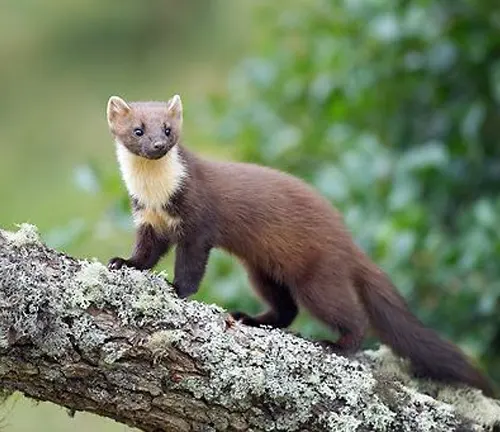
Despite their solitary nature, they establish territories and communicate through scent marking and vocalizations. European Pine Martens are opportunistic predators, feeding on small mammals, birds, insects, and fruits when available. They play a crucial role in regulating prey populations and maintaining ecosystem balance as apex predators. Throughout history, European Pine Martens have been both revered and reviled by humans, featuring prominently in folklore and cultural representations. Despite facing threats such as habitat loss and human persecution, concerted conservation efforts are underway to ensure their long-term survival and well-being.
| Attribute | Description |
|---|---|
| Scientific Name | Martes martes |
| Common Name | European Pine Marten |
| Size | Medium-sized |
| Length | 50 – 60 centimeters |
| Weight | 1 – 2 kilograms |
| Body Shape | Slender |
| Fur Color | Light to dark brown with a creamy-yellow throat patch |
| Tail | Bushy |
| Habitat | Forested areas including woodlands, coniferous forests |
| Distribution | Throughout Europe, particularly prevalent in certain countries such as Germany, France, UK, and Scandinavia |
| Diet | Carnivorous, feeding on small mammals, birds, insects, and fruits |
| Behavior | Solitary, territorial, communicates through scent marking and vocalizations |
| Reproduction | Breeds in summer, gestation period around 7 weeks, litters of 1-5 kits |
| Lifespan | Approximately 8-10 years in the wild |
| Conservation Status | Listed as a species of least concern by the IUCN |
| Threats | Habitat loss, fragmentation, human persecution, road mortality |
| Conservation Efforts | Habitat restoration, predator control measures, public awareness campaigns |
| Cultural Significance | Features prominently in folklore and cultural heritage |
European Pine Marten
The European Pine Marten, scientifically known as Martes martes, is a captivating and elusive species of mustelid native to the forests of Europe. Renowned for its sleek appearance and agile nature, the European Pine Marten holds a significant place in the ecosystem and cultural heritage of the continent.
Physical Characteristics
The physical characteristics of the European Pine Marten are distinctive and well-adapted to its forested habitat. Here are the key features:
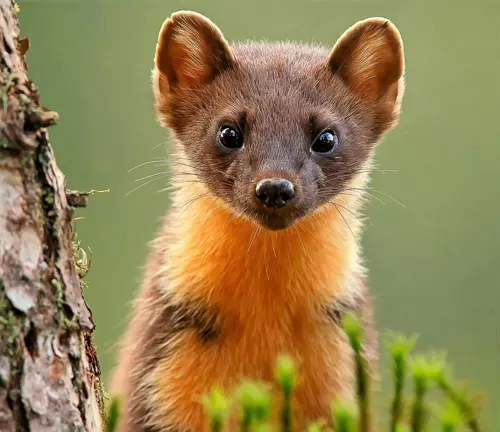

- Size: European Pine Martens are medium-sized carnivores, typically measuring between 50 to 60 centimeters (about 20 to 24 inches) in length.
- Appearance: They have a slender body with short legs and a long, bushy tail. Their fur is dense and soft, ranging in color from light brown to dark brown, often with a creamy-yellow throat patch.
- Head: Their head is small and triangular-shaped, with rounded ears and dark eyes. They have sharp, retractable claws on their feet for climbing and hunting.
- Fur: The fur of European Pine Martens is thick and glossy, providing insulation and protection from the elements. It is often darker on the back and lighter on the belly.
- Tail: Their tail is long and bushy, measuring about half the length of their body. It helps with balance and agility, especially when climbing trees.
- Weight: European Pine Martens typically weigh between 1 to 2 kilograms (about 2.2 to 4.4 pounds), with males being slightly larger than females.
- Scent Glands: They have scent glands located near their anus, which they use for marking territory and communicating with other martens.
Habitat and Distribution
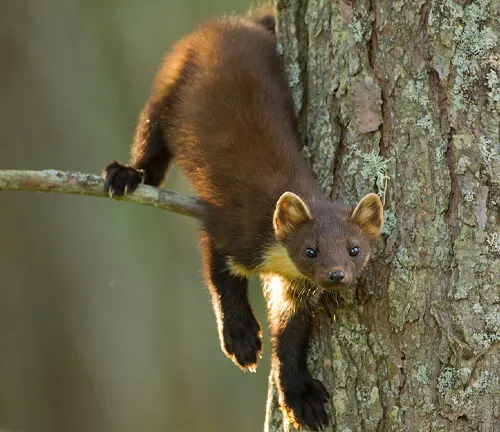

The European Pine Marten is primarily found in forested habitats across Europe, ranging from woodlands and coniferous forests to mixed forests. Its distribution spans various countries, with notable populations in Germany, France, the United Kingdom, Scandinavia, and other parts of Europe.
These martens are adaptable creatures, capable of thriving in diverse forest environments. They are often associated with mature forests with ample cover and suitable prey populations. However, they can also be found in secondary forests, provided there is enough vegetation for shelter and hunting opportunities.
European Pine Martens prefer areas with a mix of trees, including pine, spruce, beech, and oak, as well as dense undergrowth for cover and nesting sites. They are known to establish territories within their preferred habitat, marking boundaries with scent and vocalizations.
While European Pine Martens primarily inhabit continental Europe, they can also be found in some regions of the British Isles, where they are known as “Martens” or “Martins.” Their distribution within these areas may vary based on habitat availability and historical factors.
Diet and Feeding Habits
The European Pine Marten is a carnivorous mammal with a diverse diet and hunting strategy. Here’s an overview of its diet and feeding habits:
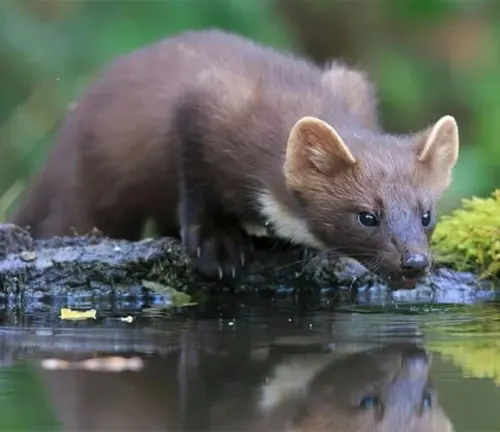
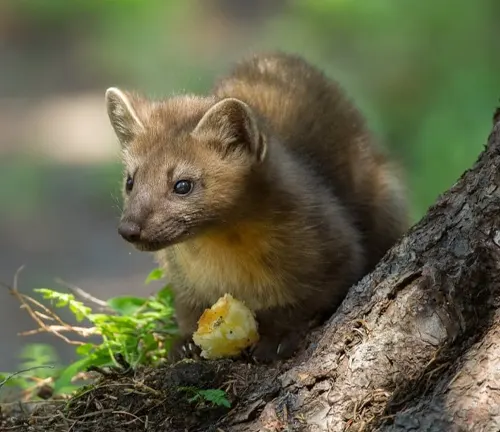
- Prey: European Pine Martens primarily prey on small mammals such as voles, mice, rats, and squirrels. They also hunt birds, including ground-nesting species like grouse and game birds. Insects, amphibians, and even small reptiles may also be part of their diet.
- Foraging: These martens are opportunistic hunters, using their keen senses of sight, smell, and hearing to locate prey. They are skilled climbers and will often hunt in trees, targeting birds’ nests and arboreal mammals.
- Hunting Techniques: European Pine Martens employ a variety of hunting techniques depending on the availability of prey. They may stalk and ambush their prey from the ground or pursue it through the treetops. Their agility and sharp claws make them effective climbers, allowing them to access prey in the canopy.
- Scavenging: In addition to hunting, European Pine Martens are also known to scavenge carrion when available. They may feed on the remains of larger animals left behind by other predators or scavengers.
- Seasonal Variation: The diet of European Pine Martens can vary seasonally, depending on factors such as prey availability and environmental conditions. For example, they may consume more fruits and berries during the autumn months when these resources are abundant.
- Food Storage: European Pine Martens have been observed caching excess food, particularly during periods of abundance. They may hide prey items in crevices or under vegetation for later consumption, helping to ensure a steady food supply during lean times.
Behavior and Social Structure
The behavior and social structure of the European Pine Marten are fascinating aspects of its biology. Here’s an overview:

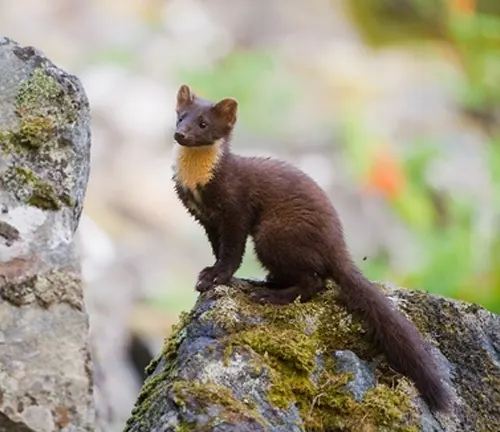
- Solitary Nature: European Pine Martens are primarily solitary animals, typically preferring to live and hunt alone. They establish and defend territories, which they mark with scent from specialized glands located near the anus.
- Territorial Behavior: Martens are territorial creatures, and the size of their territory depends on factors such as habitat quality, prey availability, and population density. Territories may overlap, especially between members of the opposite sex.
- Communication: Despite their solitary nature, European Pine Martens communicate with conspecifics through a variety of methods. They use scent marking, such as rubbing their anal glands on trees or rocks, to establish territory boundaries and convey information about their presence to other martens. They also vocalize, using chirps, barks, and hisses to communicate with nearby individuals.
- Social Interactions: While European Pine Martens are predominantly solitary, they may interact with other individuals, especially during the breeding season. Mating pairs may come together temporarily, and encounters between individuals may occur while foraging or defending territories.
- Breeding Season: Breeding typically occurs in the summer months, with females giving birth to litters of kits after a gestation period of around 7 weeks. Males may compete for access to females during this time, engaging in ritualized displays and vocalizations.
- Parental Care: Female Pine Martens raise their young alone, providing care and protection until the kits are old enough to fend for themselves. The young are weaned at around 8 to 10 weeks old and become independent after several months.
- Activity Patterns: European Pine Martens are primarily nocturnal, meaning they are most active during the night. However, they may also be active during the day, especially in areas with less human disturbance or during periods of high prey activity.
Reproduction and Life Cycle
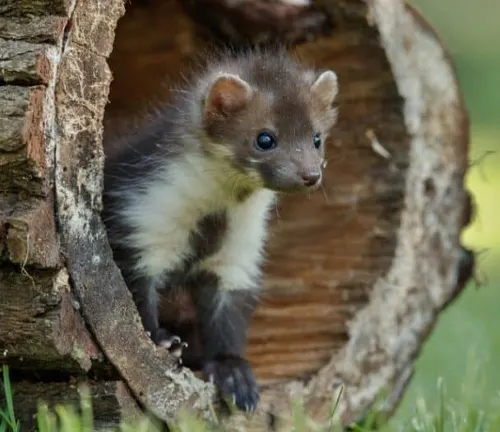
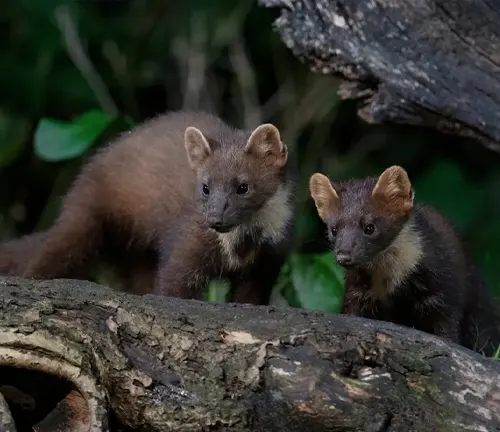
Reproduction and the life cycle of the European Pine Marten are fascinating processes that contribute to the species’ survival. Here’s an overview:
- Breeding Season: The breeding season for European Pine Martens typically occurs in the summer months, usually between June and August. During this time, males become more active in seeking out potential mates, and females enter estrus, or heat.
- Mating Behavior: Male Pine Martens may engage in courtship displays to attract females, including vocalizations and scent marking. Once a female is receptive to mating, she may allow the male to approach and copulate.
- Gestation Period: After mating, the female Pine Marten undergoes a gestation period of around 7 weeks, or approximately 42 days. During this time, the developing embryos are nourished within the mother’s womb.
- Birth of Kits: Female Pine Martens give birth to litters of kits, usually ranging from 1 to 5 offspring. The size of the litter may vary based on factors such as maternal health, age, and environmental conditions.
- Maternal Care: After giving birth, the female Pine Marten provides care and protection to her young. She nurses them with milk produced in her mammary glands and keeps them warm and sheltered within a den or nesting site.
- Weaning and Independence: Kits are weaned from their mother’s milk at around 8 to 10 weeks old. During this time, they begin to explore their surroundings and may accompany their mother on foraging trips. Eventually, they become independent and venture out on their own.
- Juvenile Development: Young Pine Martens continue to grow and develop as they transition into juveniles and eventually adults. They learn essential hunting and survival skills from their mother and may disperse to establish their territories once they reach maturity.
- Sexual Maturity: European Pine Martens typically reach sexual maturity at around one to two years of age, although this can vary among individuals and populations. Once mature, they are capable of reproducing and contributing to the next generation of martens.
Challenges and Threats
The European Pine Marten faces several challenges and threats that impact its survival and well-being. Here’s an overview of some of the primary challenges:
- Habitat Loss and Fragmentation: One of the most significant threats to European Pine Martens is habitat loss and fragmentation. Deforestation, urbanization, and agricultural expansion reduce the availability of suitable habitat and fragment existing habitat patches, limiting the martens’ ability to find food, shelter, and mates.
- Human Persecution: Historically, European Pine Martens have been persecuted by humans due to conflicts with game species and poultry. Although hunting and trapping regulations are now in place in many areas, illegal killing, accidental mortality through road collisions, and intentional poisoning still occur.
- Climate Change: Climate change poses a growing threat to European Pine Martens and their habitats. Shifts in temperature and precipitation patterns can alter the distribution and abundance of prey species, disrupt breeding cycles, and affect habitat suitability, leading to increased stress on martens’ populations.
- Disease Outbreaks: Disease outbreaks, such as distemper and sarcoptic mange, can have devastating effects on European Pine Marten populations. These diseases can spread rapidly within martens’ populations, causing mortality and reducing overall population numbers.
- Competition with Invasive Species: European Pine Martens may face competition with invasive species introduced to their habitats, such as American mink. Invasive species can outcompete martens for food and resources, leading to declines in marten populations.
- Genetic Fragmentation: Fragmentation of martens’ habitats can lead to genetic isolation and reduced genetic diversity within populations. Inbreeding depression and genetic bottlenecks can increase the susceptibility of martens to diseases and reduce their ability to adapt to changing environmental conditions.
- Human Disturbance: Human activities, such as recreational activities, logging, and infrastructure development, can disturb martens’ habitats and disrupt their natural behaviors. Increased human presence in martens’ habitats can lead to stress, habitat avoidance, and displacement.
Conservation Efforts
Conservation efforts aimed at protecting the European Pine Marten are crucial for ensuring the species’ long-term survival. Here are some key conservation initiatives:
- Habitat Restoration: Efforts to restore and preserve the European Pine Marten’s natural habitat are essential for maintaining viable populations. This includes reforestation, habitat enhancement, and the creation of wildlife corridors to connect fragmented habitats.
- Protected Areas: Establishing protected areas, such as national parks, nature reserves, and wildlife sanctuaries, provides essential refuges for European Pine Martens and other wildlife. These protected areas help conserve critical habitats and provide space for martens to thrive without human disturbance.
- Management of Hunting and Trapping: Regulation of hunting and trapping activities is necessary to prevent overexploitation of European Pine Marten populations. Implementing sustainable harvest quotas, monitoring of hunting activities, and enforcing regulations help ensure that martens are not subjected to excessive mortality.
- Research and Monitoring: Research studies aimed at understanding the ecology, behavior, and population dynamics of European Pine Martens provide valuable insights for conservation efforts. Monitoring programs track population trends, habitat use, and threats, guiding management decisions and conservation priorities.
- Public Education and Outreach: Increasing public awareness about the importance of European Pine Martens and their habitats is crucial for garnering support for conservation initiatives. Educational programs, workshops, and outreach activities engage communities in conservation efforts and encourage responsible stewardship of natural resources.
- Collaborative Partnerships: Collaborative partnerships between government agencies, conservation organizations, researchers, and local communities are essential for implementing effective conservation measures. By pooling resources, expertise, and local knowledge, these partnerships can achieve greater conservation impact and address complex conservation challenges.
- Community Involvement: Involving local communities in conservation efforts fosters stewardship and promotes sustainable land use practices. Engaging stakeholders in decision-making processes, incorporating traditional knowledge, and supporting community-led conservation initiatives enhance the effectiveness and sustainability of conservation efforts.
- Climate Change Adaptation: Proactive measures to address the impacts of climate change on European Pine Martens and their habitats are essential for their long-term survival. This includes identifying and protecting climate-resilient habitats, implementing adaptation strategies, and reducing greenhouse gas emissions to mitigate climate change effects.
Different Species
American Marten
(Martes americana)
Found in North America, ranging from Alaska and Canada down to the northern United States. It inhabits forests and wooded areas, similar to the European Pine Marten.

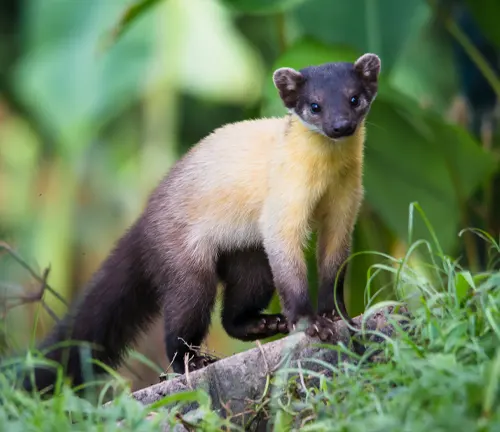
Yellow-throated Marten
(Martes flavigula)
Native to Southeast Asia, including countries such as China, India, Myanmar, Thailand, and Vietnam. It prefers forested habitats and is known for its distinctive yellow throat patch.
Japanese Marten
(Martes melampus)
Endemic to Japan, inhabiting forests and mountainous regions across the country. It shares similar physical characteristics with the European Pine Marten but has a different geographical distribution.

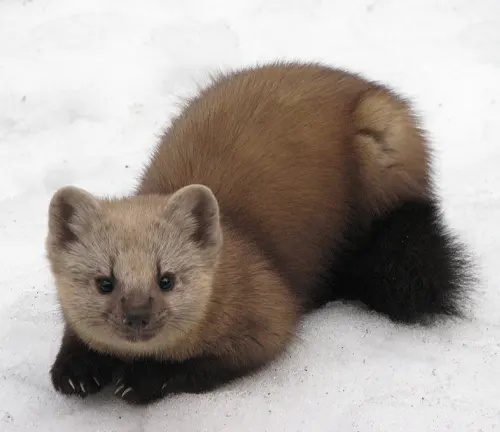
Sable
(Martes zibellina)
Found in parts of Russia and Siberia, as well as in China, Mongolia, and Korea. The Sable is highly valued for its fur and has historically been heavily hunted for the fur trade.
Fisher
(Martes pennanti)
Native to North America, primarily found in Canada and the northern United States. It inhabits forests and is known for its agility and hunting prowess.
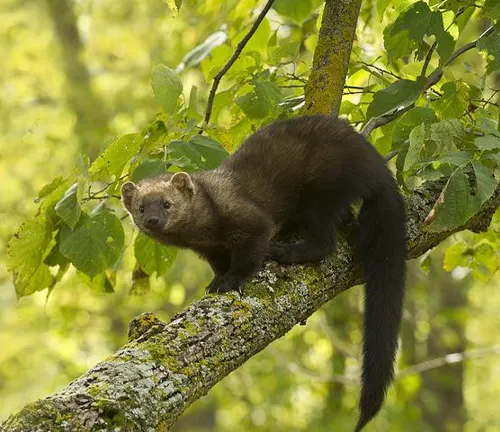
Frequently Asked Questions (FAQs)
- Where do European Pine Martens live?
European Pine Martens inhabit various forested areas across Europe, including woodlands, coniferous forests, and mixed forests. - What do European Pine Martens eat?
European Pine Martens are carnivores, feeding on small mammals, birds, insects, and occasionally fruits and berries. - How big do European Pine Martens get?
European Pine Martens are medium-sized carnivores, typically measuring between 50 to 60 centimeters in length, with males being slightly larger than females. - Are European Pine Martens endangered?
European Pine Martens are not currently considered endangered. They are listed as a species of least concern by the International Union for Conservation of Nature (IUCN). - Do European Pine Martens have any predators?
While European Pine Martens are apex predators, they may be preyed upon by larger carnivores such as wolves, lynx, and birds of prey. - How do European Pine Martens communicate?
European Pine Martens communicate through scent marking and vocalizations, such as chirps, barks, and hisses. - What is the breeding season for European Pine Martens?
European Pine Martens typically breed in the summer months, with females giving birth to litters of kits after a gestation period of around 7 weeks. - How long do European Pine Martens live?
In the wild, European Pine Martens have an average lifespan of around 8 to 10 years. - Do European Pine Martens live in groups?
European Pine Martens are primarily solitary animals, although they may interact with other individuals, especially during the breeding season. - Are European Pine Martens nocturnal?
Yes, European Pine Martens are primarily nocturnal, meaning they are most active during the night. - What is the role of European Pine Martens in the ecosystem?
European Pine Martens play a crucial role in regulating prey populations and maintaining ecosystem balance as apex predators. - Do European Pine Martens migrate?
European Pine Martens typically do not migrate, but they may move within their territory in search of food or suitable habitat.


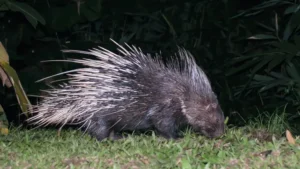
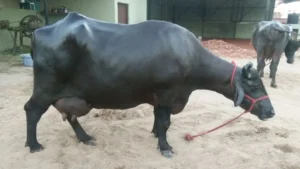
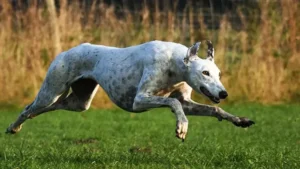

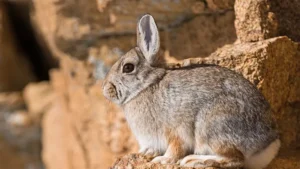
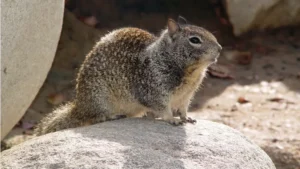
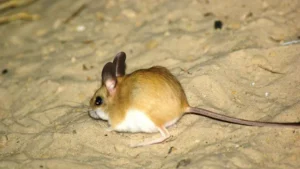
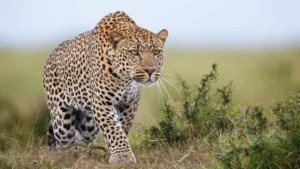
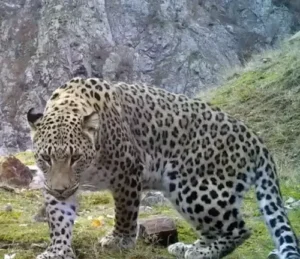


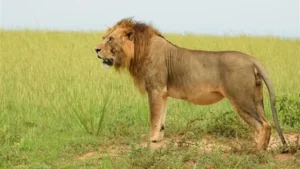
Leave your comment